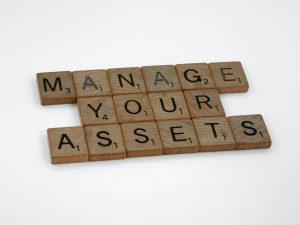Basic checklist for an equity investment
 When you decided to start investing, you end up with many options such as Gold, Real estate, bonds, Equity, Bank FDs, and many more. An equity investment attracts more to all types of investors whether an investor is risk averse, risk neutral or risk taker. The vision of every investor is to generate wealth while making an investment with or without having risk.
When you decided to start investing, you end up with many options such as Gold, Real estate, bonds, Equity, Bank FDs, and many more. An equity investment attracts more to all types of investors whether an investor is risk averse, risk neutral or risk taker. The vision of every investor is to generate wealth while making an investment with or without having risk.
When you invest in equity you are not only buying a particular stock, you are buying a piece of business that generates value for you. Many people find difficulties while making equity investment decisions, but here are some basic checklists for equity investments that will help you to start your investment journey.
- What is your goal and time horizon? – the first step to choosing investments is to determine your goal, time horizon, and most importantly your risk appetite. No doubt everyone’s goal is to make money but some investors focused on generating additional income during retirement, and some investors focus on the capital appreciation and building wealth. While making an investment you also need to determine the time horizon because it plays an important role. Your time horizon could be based on your financial goals.
- Nature and perspective about business – “Never invest in a business you don’t understand,” the quote comes from Mr Warren buffet. One of the easy ways to burn capital is to invest in a business that you do not understand. Understand the type of business, current environment of the business, and outlook about the business along with the past financial track record of the company while investing.
- Uniqueness in business – A unique business model differentiates the company from its industry peers. Uniqueness in the business model indicates the company’s ability to maintain its competitive advantage over its peers. This translates into adequate margins, consistent cash flow generation, and increasing the company’s value over time.
- Quality of management – Do not only analyze the numbers but analyze the people behind the numbers. The quality of the management of the company plays an important role when making an investment decision. Father of growth investing, Mr Philip A Fisher says, investors should pick such companies for investments that have managements that show a strong sense of trusteeship and moral responsibility to their shareholders.
- Financial ratios are critical – Balance sheet, Profit and loss statements, and cash flow statement are the three main documents released by the company. With the help of these, you can evaluate a variety of financial ratios, performance, historical growth, and financial strength. Understanding the financial ratios will lead you to move in the right direction. You can evaluate this ratio between different years and between its industry peers. Many basic ratios are critical for analysis such as Return on Equity (ROE), Return on Capital Employed (ROCE), Debt to Equity, inventory, and asset turnover ratio, profitability margins, and many more.
- Be aware of value traps – Some companies look undervalued relative to their industry peers. There is always a risk that the company looks undervalued and might it suffering from financial distress and low future growth potential. Many new investors fall into this value trap. To avoid that trap always evaluate the company’s financial numbers, quality of management, competitive advantages, and nature of business.
- Avoid rumours – Another easy way of losing capital is to chase rumours and speculative news. Do not hurry and buy stock on such news without checking new developments. It is all right to not buy the stock which looks attractive based on the rumours and speculations.
At the end of your research process, you might end up with a list of limited numbers of companies. It is fine. Your research process helped you to eliminate companies which not suitable for your financial goal, and your risk appetite.
Happy Investing!
Disclaimer: “The views expressed are for information purposes only. The information provided herein should not be considered investment advice or research recommendation. The users should rely on their own research and analysis and should consult their own investment advisors to determine the merit, risks, and suitability of the information provided.”








